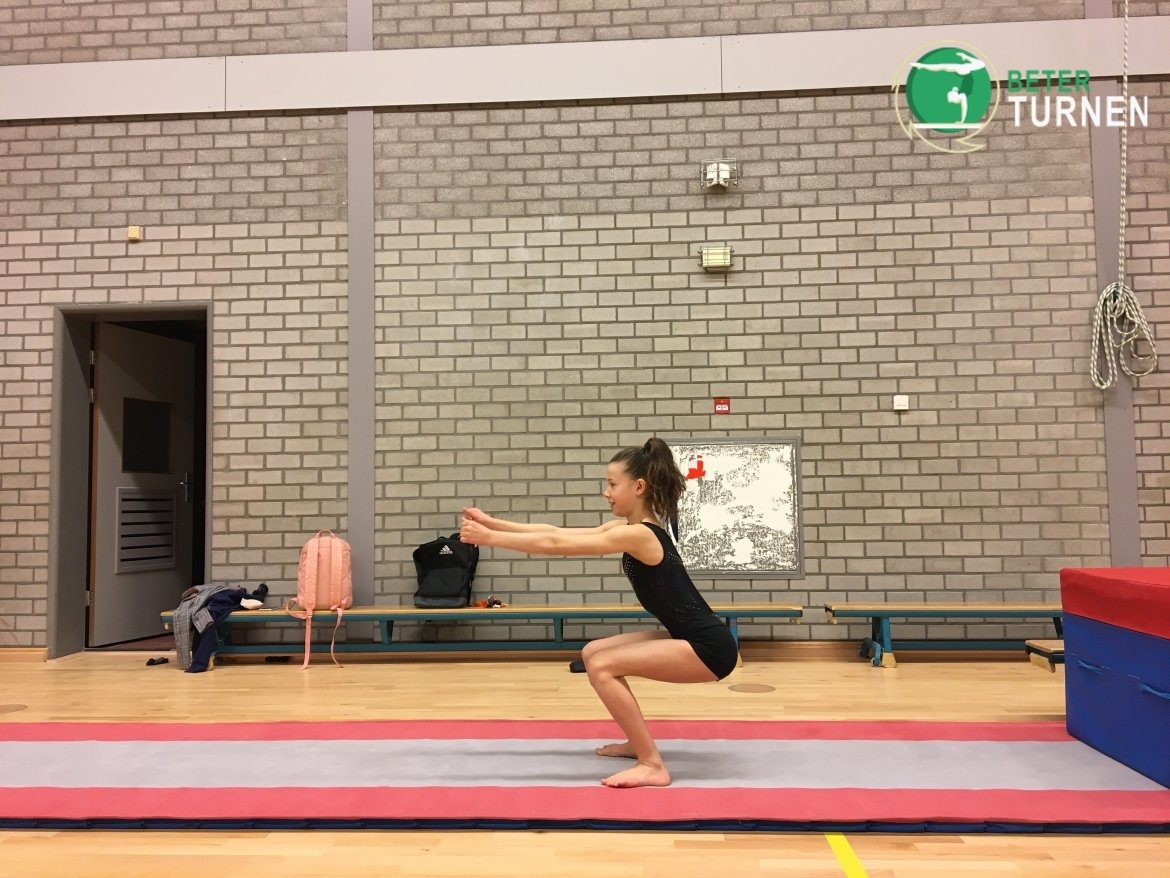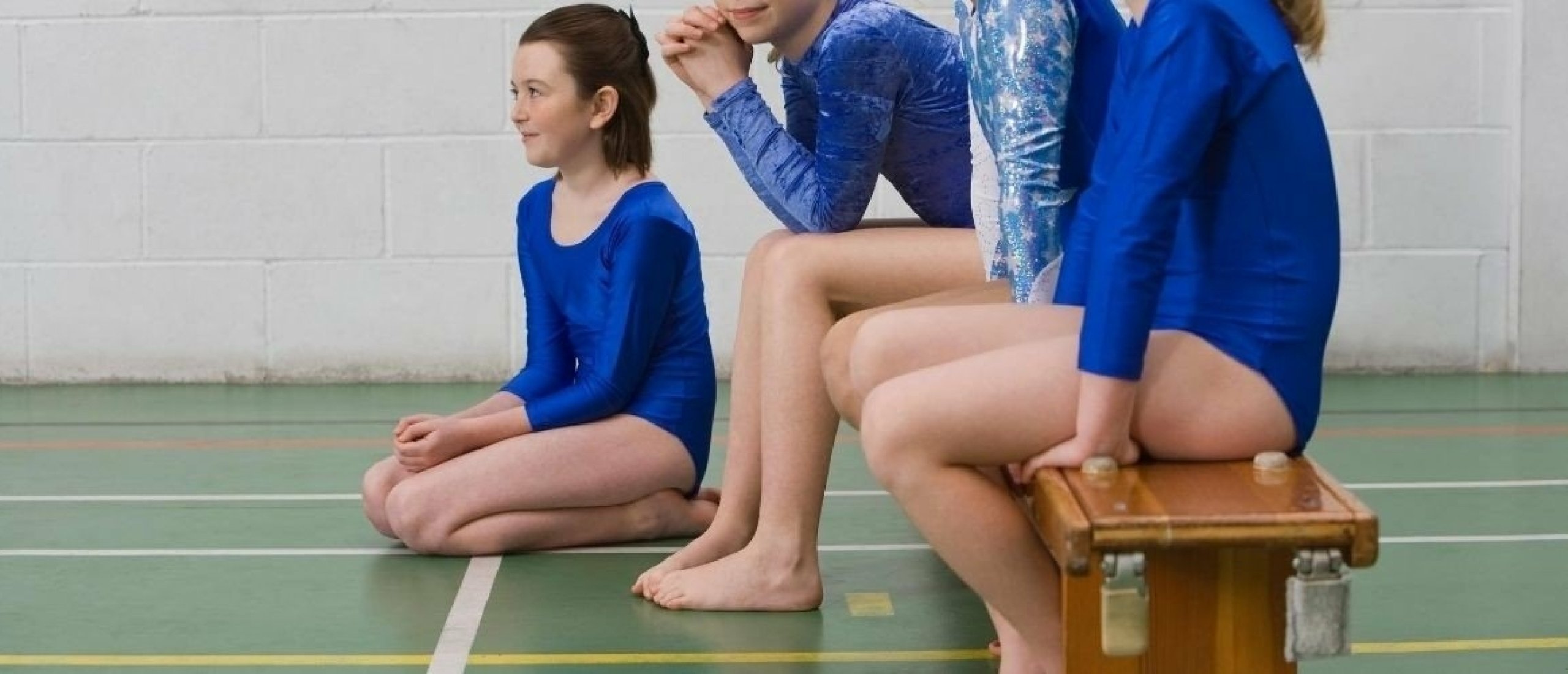Jump power in gymnastics occurs in almost every apparatus. Take a look at the FIG, you will find numerous jumps in the tables. Jumps, beam, floor and even the high bar are parts where jumps are possible. Examples of jumps are the running jump, splits, scissors jump, change of direction jump and the pegasus jump.
What is jump power?
Jump strength is, among other things, a plyometric and explosive form of strength training. It puts a lot of strain on the muscles and joints. Because there are so many different components in gymnastics where jump power is important, there are also aids to make the jumps easier. Think of a plank, plankoline, trampoline and airtracks. There are also strict rules about mats and other materials such as the resilience of the floor that dampens the landing after a jump.
Plyometrics and explosive power require the muscles to switch quickly and are very taxing on the body. Before you can train your jumping power in a targeted way, you must first master the basic power.
What is plyometrics?
Plyometrics is one of the most demanding forms of strength training. Plyometrics is a form of training in which a muscle is extended in a tensed position. Think of the collapse phase of the jumpsquat. In order to slow down the squat, your muscles tighten. You then want to jump up again as quickly as possible. Your muscles must immediately convert the force created in the slump phase back into energy in order to jump up again from a stretching reflex. You can compare this to a rubber band being released. You first have to stretch it a lot in order to shoot it away. Then the elastic shortens quickly. The muscles have a similar elasticity component.
What is explosive power?
The difference between plyometrics and explosive strength is that with explosive strength you do not use the stretch reflex, as compared to the elastic above. Explosive power is the transfer of weight as quickly as possible, with no preload as in plyometric movement.
I will clarify it with a practical example.
Plyometric forms of exercise
Example 1: jump series
Take the example of a jumps combination: splits directly followed by an extended jump full turn. You want to go straight from the splits to the full twist. Then you land your splits and immediately jump up again to start the whole spin. Your muscles lengthen in a tense position and then have to shorten again immediately. Just like the rubber band you pull backwards and then slip away.
Example 2: Deep jump from the box followed by a staggered jump
In this example, your muscles are helped to gain height by the suspension of the trampoline. This makes the jump less stressful for your muscles and joints because of the elasticity of the trampoline. You step off the box, land in the trampoline, slump a little and then jump back up and start the spread jump.
Explosive power
Explosive power is needed for jumping, among other things. You want to kick your legs up as quickly as possible after the push-off on the plank, plank-oline or trampoline in order to make a turnover over the pegasus. Explosive power is also needed for the examples described above.
Example 1: jump series
With the splits, you want to throw up your legs as quickly as possible to form a split and close them again as quickly as possible. This second phase, closing your legs quickly to be able to land your jump properly, is often forgotten. If you close your legs in time, you can then land with two feet and continue bouncing.
Example 2: Spreading jump on beam
With a staggered jump on beam, you push off from a standing position. Your muscles must deliver all the power they have in one go in order to initiate the jump and spread your legs.
Conditions for good jumping power with examples for practice.
As I wrote in the beginning of this article, good basic strength is a prerequisite for training jump power. Your leg muscles must be strong and provide stability to the joints. With explosive strength you should be able to push off about 1.5 times your own body weight.
In this article we will mainly focus on jumps which require leg muscles. Explosive power and plyometrics can of course also be trained for the upper extremity (arms, chest, back and trunk).
Strength exercise for jumping power
Five of the basic strength exercises for the legs are:
The squat
Focus on the technique first. The execution is very important and is a prerequisite for making the exercise heavier later on. If the technique is good, the athlete can perform more repetitions. You can then make the exercise heavier by using weights or resistance bands. You can then add an explosive component. For example, with the squat you can ask the athlete to make a squat and then jump up as high as possible, or even a box or block, the box jump. Another example is the calf raise; have the athlete make bouncing jumps to squat landing. The athlete must then use the explosiveness of the calf muscles to initiate the stretch jump from the stop made at the squat landing.

Jump ABC
General jump power is often trained with the ABC jump. This is a methodical structure in which jumps are trained from easy to difficult. This protocol starts with the basic strength (squat) and builds it up via explosive to plyometric training forms.
An example of the jump ABC:
- Squat: Sink down as if sitting on a chair and then straighten up again.
- Squat jumps: collapse as if sitting on a chair and then jump up so that you are off the ground.
- Countermovement jumps: collapse as if you were sitting on a chair and then immediately jump up so that you are free of the ground.
- Stop jump: countermovement jump in which you land in squat, stop for a moment and start again with the next stop jump.
- Pre-stretch jumps: You stand on an elevation, let yourself fall from it and immediately sink into a squat jump.
You can vary the exercises by performing them one-legged or two-legged, varying their height and distance.
How to train your jumping power: sport-specific, do’s & dont’s
Do’s
- Warm up well
- Have specific jump power training in your warm-up or physical blocks
- Incorporate sports specific jump power into your lessons
- Stop in time if you lose form: it is better to do 3 good repetitions than 12 with technical mistakes.
- Train jumping power both one and two-legged
Dont’s
- Starting to train jump power without a good basis because it leads to injuries
I will go through a jumping power training for floor, beam, jump and physical with you
Floor: splits
Preparation: This lesson is for the whole class. Have the gymnasts do the exercises in pairs.
Equipment: one board per pair, possibly leg weights
Implementation:
Perform the following exercises with the emphasis on wide quick leg spread
- Straight jumps forwards and backwards 3 lanes
- Single-legged handball jumps forwards, sideways and backwards 1 lane
- 5x split jumps from plank to squat landing left & right
- Splitside jump from the plank + left & right stretch jump, 5x
- Five times splat jump half turn to squat landing left & right
- 5x split jump half plank turn + left & right stretch jump
Ball: Jump through
Preparation: This lesson should be done in class on the bar.
Equipment: a beam
Implementation:
Perform the following exercises with the emphasis on jumping through from one jump to the next as quickly as possible (short beam contact).
- Stretch jump + squat landing
- Single-legged jump + landing
- Two-legged jumps
- One-legged jumps
- Three small handsprings + stretching handspring
- 3x stretch jump + squat jump
- Stretch jump + split jump, 3x
- Three times splits + stretch jump
Jump: plyometrics
Preparation: Carry out this lesson in stations
Equipment: 2 blocks, plankoline + closet/pega
Perform the exercises below for 20 seconds and then alternate with 20 seconds of rest in between.
- Handball jumps over the runway
- Stop jumps over the runway
- Squat jump the block
- Wig-wag over the jump line (kick up the leg> place the feet towards the hands> release the hands and place them forward)/ rabbit jumps?
- Leapfrog on the pegasus
Physical jumping power
Example 1: explosive leg-swinging splits
Preparation: Carry out this lesson in stations
Execution: the emphasis is on making the leg turn as quickly as possible; this should be at the same pace for each turn.
Perform the following exercises for 8 repetitions.
- Leg swing in the supine position with elasticated ankles left & right
- Leg swing at the bar (possibly with ankle weights) forwards and backwards in relevance
- Splits with support on the bar left & right
- Leg swing with front leg resting on the block
- Swinging with the back leg supported by the block
Example 2: rebound training general
Preparation: This lesson is carried out in flow form.
Execution: the emphasis is on the shortest possible ground contact.
Equipment: running ladder, 3 blocks, plank, pawns
- Jumps two legs forward through the gangway
- Skate jumps from pawn to pawn
- Stretch jump up the block, jump off and immediately rebound onto the next block
- Lateral bounce on the line (both ways)
- Bounce forward over the pawns
Hopefully after reading this blog you will have more insights about training jumps. The importance of this specific training is great and also the basis will determine if you can train this without getting injured.






